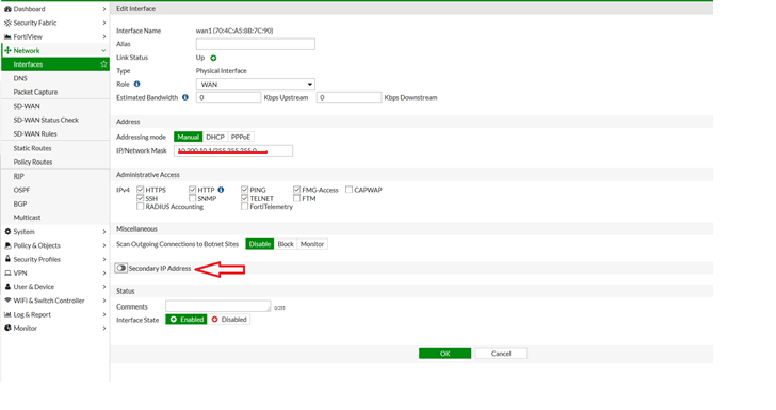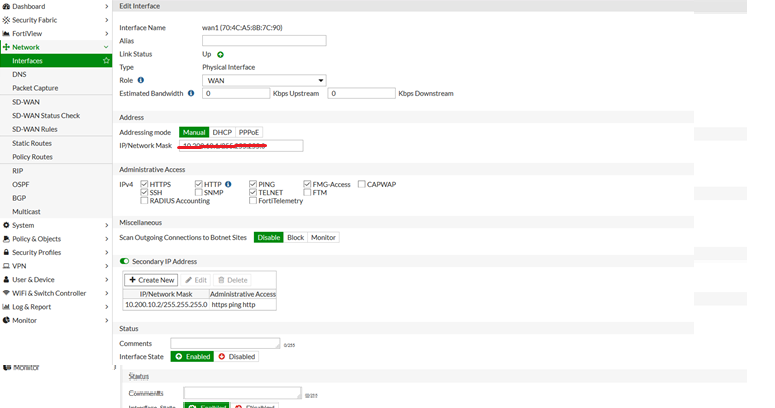- Support Forum
- Knowledge Base
- Customer Service
- Internal Article Nominations
- FortiGate
- FortiClient
- FortiADC
- FortiAIOps
- FortiAnalyzer
- FortiAP
- FortiAuthenticator
- FortiBridge
- FortiCache
- FortiCare Services
- FortiCarrier
- FortiCASB
- FortiConverter
- FortiCNP
- FortiDAST
- FortiData
- FortiDDoS
- FortiDB
- FortiDNS
- FortiDLP
- FortiDeceptor
- FortiDevice
- FortiDevSec
- FortiDirector
- FortiEdgeCloud
- FortiEDR
- FortiEndpoint
- FortiExtender
- FortiGate Cloud
- FortiGuard
- FortiGuest
- FortiHypervisor
- FortiInsight
- FortiIsolator
- FortiMail
- FortiManager
- FortiMonitor
- FortiNAC
- FortiNAC-F
- FortiNDR (on-premise)
- FortiNDRCloud
- FortiPAM
- FortiPhish
- FortiPortal
- FortiPresence
- FortiProxy
- FortiRecon
- FortiRecorder
- FortiSRA
- FortiSandbox
- FortiSASE
- FortiSASE Sovereign
- FortiScan
- FortiSIEM
- FortiSOAR
- FortiSwitch
- FortiTester
- FortiToken
- FortiVoice
- FortiWAN
- FortiWeb
- FortiAppSec Cloud
- Lacework
- Wireless Controller
- RMA Information and Announcements
- FortiCloud Products
- ZTNA
- 4D Documents
- Customer Service
- Community Groups
- Blogs
- Fortinet Community
- Knowledge Base
- FortiGate
- Technical Tip: How to configure IPsec VPN settings...
- Subscribe to RSS Feed
- Mark as New
- Mark as Read
- Bookmark
- Subscribe
- Printer Friendly Page
- Report Inappropriate Content
Created on
03-04-2010
05:11 PM
Edited on
10-30-2024
10:47 PM
By
Anthony_E
Description
This article explains how to define a secondary IP address for the interface and use that address as the local VPN gateway address.
The IP address of a VPN gateway is usually the IP address of the network interface that connects to the Internet.
The benefit of the option stated here above is that the existing setup is not affected by the VPN settings.
Scope
IPsec, VPN, Phase1, FortiOS, Site-to-Site VPN, tunnel, secondary IP, peer.
Solution
To add the IP address:
- Edit the external Interface and set secondary IP by navigating to System -> Network -> Interface.

2. Enable the option to configure the Secondary IP address under the interface and create a new IP address.


-
Modify phase1 settings from CLI and set the local-gw parameter to use a secondary IP for the VPN tunnel:
edit MyVPNTunnel
set interface wan1
set local-gw 10.200.10.2
edit MyVPNTunnel
set interface wan1
set local-gw 10.200.10.2
-
While configuring VPN settings on remote peers use the secondary IP address instead of the primary address.
-
Once the change is made the IPSec tunnel will be established using the secondary IP address defined under the local gateway, the same can be verified by running below sniffer command below.
di sniffer packet any 'host x.x.x.x and port (500 or 4500)' 4 0 l
x.x.x.x is the remote peer IP address
As of v6.4.9 -- ID 728468: 'Local-gw' IP address must be assigned to the interface to work properly, either as a primary or secondary address.
Related document:
The Fortinet Security Fabric brings together the concepts of convergence and consolidation to provide comprehensive cybersecurity protection for all users, devices, and applications and across all network edges.
Copyright 2025 Fortinet, Inc. All Rights Reserved.

